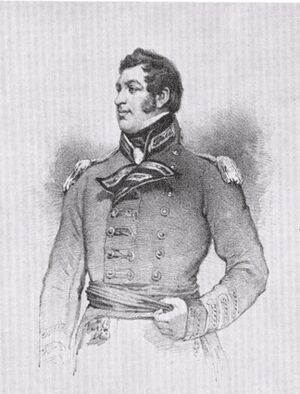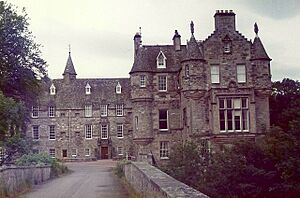Francis Ogilvy-Grant, 6th Earl of Seafield facts for kids
Francis William Ogilvy-Grant, 6th Earl of Seafield (born March 6, 1778 – died July 30, 1853) was an important Scottish nobleman. He was also a Member of Parliament, which means he helped make laws for the country. He was known as the 25th Chief of Clan Grant, a famous Scottish family. He also held the role of Lord Lieutenant for Inverness-shire, representing the King or Queen in that area.
Contents
Early Life and Family
Francis William Grant was born on March 6, 1778. He was the second son of Sir James Grant, 8th Baronet, and his wife, Jane Duff.
In 1811, he married Mary Anne Dunn. Her father, John Charles Dunn, was a wealthy merchant from India. Francis and Mary Anne had five children together. After Mary Anne passed away in 1840, he married Louisa Emma in 1843.
Francis took charge of his family's lands and the Seafield Earldom in 1811. This was because his older brother, Sir Lewis Alexander Grant, was unable to manage them. Francis officially became the Earl of Seafield in 1840.
Lord Seafield passed away in July 1853, when he was 75 years old. He was buried in a special family tomb at Duthil Old Parish Church and Churchyard in Duthil, Inverness-shire. His third son, John Charles Ogilvy-Grant, became the next Earl.
His Work in Public Service
Francis William Ogilvy-Grant started his career in the military when he was just 15 years old in 1793. He became a lieutenant in a group called the Strathspey Fencibles. He later became a high-ranking officer, a lieutenant colonel, in 1799. He served with his regiment in Gibraltar in 1800 and 1801. In 1809, he became a full colonel in the British Army.
He also became the Lord Lieutenant of Inverness-shire. This was a very important job where he represented the King or Queen in the area.
A Long Political Career
In 1802, Francis, often called 'Colonel Grant', was elected to the House of Commons. This is a part of the British Parliament where elected representatives make laws. He represented different areas over the years, including Elgin Burghs and Inverness Burghs.
He served in Parliament for a very long time, 50 years in total! In 1840, he became the Earl of Seafield. This meant he then sat in the House of Lords, another part of Parliament, as a Scottish Representative Peer. He was a member of the Conservative political party and supported leaders like Sir Robert Peel.
Francis was also a member of the Church of Scotland. He was an ordained elder, which means he held a leadership role in his local church. He also represented his church area in the General Assembly, which is like a big meeting for the whole church.
Improving His Lands
Lord Seafield was famous for planting many trees. He was known as the biggest tree planter in Britain! Records show that by 1847, he had planted over 31 million young trees. These included Scotch firs, larch, and other hardwood trees. These trees covered a huge area of land, more than 8,200 acres. He planted them in places like Cullen, Moray, Strathspey, and Glen Urquhart. For all his tree planting, he received a special gold medal from the Highland and Agricultural Society of Scotland.
He mostly lived at Cullen House. He loved making the landscape beautiful. He changed the house, its gardens, and the nearby town. He also made improvements to other towns on his lands.
In 1826, Lord Seafield ordered the rebuilding of the Parish Church and the building of the Seafield Mausoleum in Duthil.
He also allowed people from a company called the New Brunswick and Nova Scotia Land Company to visit his lands in 1836. He thought that some people from the Urquhart area might find it helpful to move to other countries for new opportunities.



